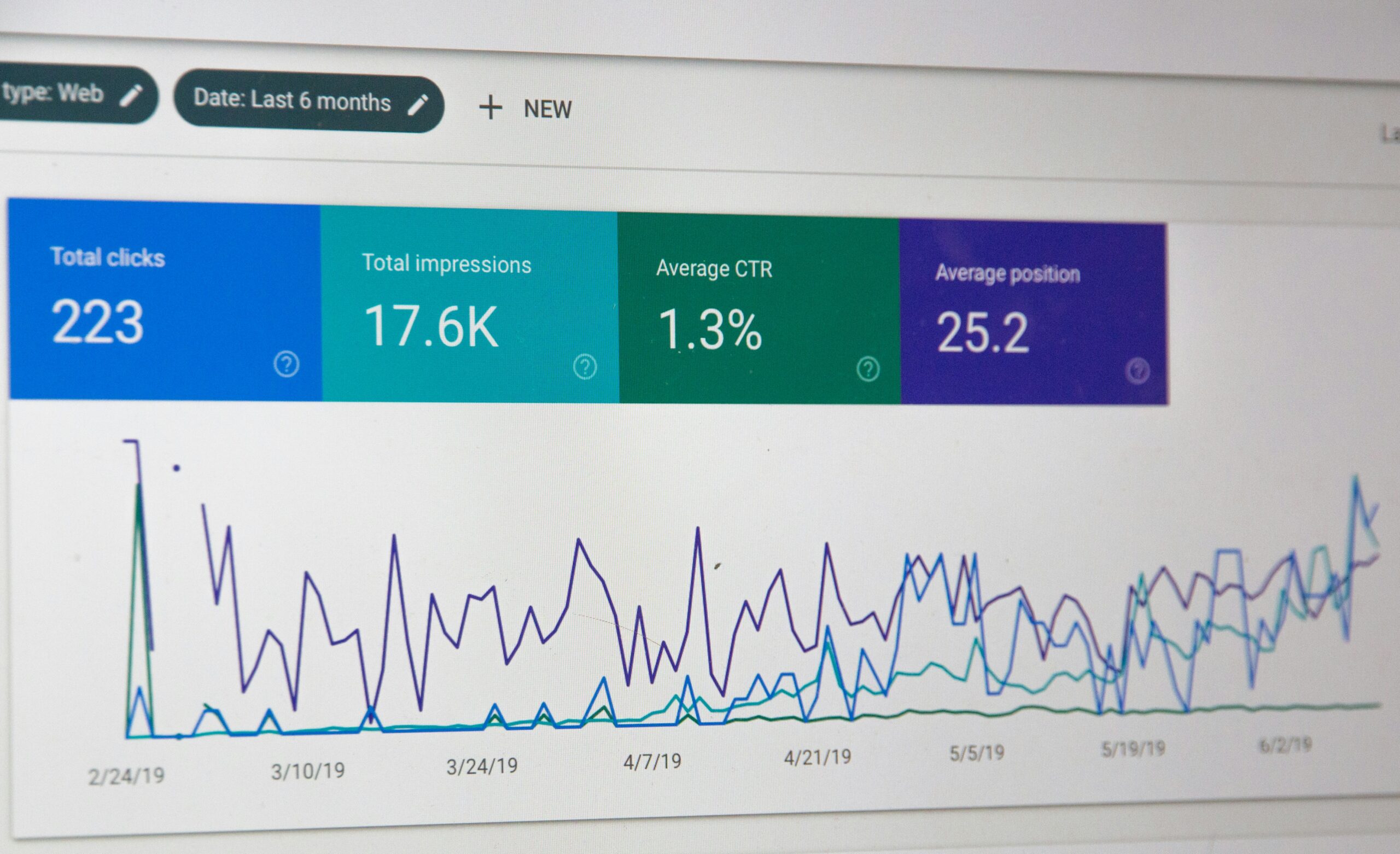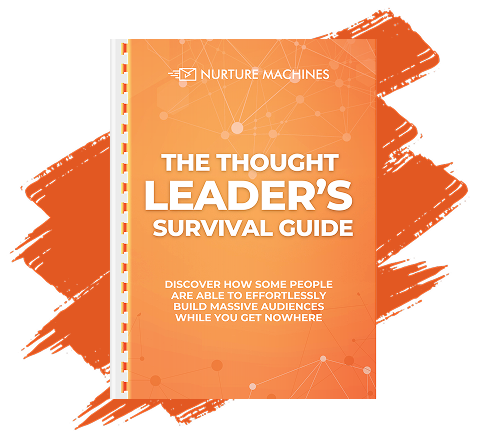Key Takeaways
- Targeted campaigns focus on high-intent prospects using behavioral data and segmentation
- Automated nurturing delivers timely, personalized content across multiple channels
- Predictive lead scoring prioritizes outreach based on fit and engagement
- Multi-channel workflows increase reach while maintaining message relevance
- Real-time analytics and testing help optimize performance at every funnel stage
What Is Targeted Lead Generation and Why Is It Essential for Maximum Impact?

Targeted lead generation focuses on identifying high-intent prospects based on precise data rather than casting a wide net. It relies on segmentation and behavior signals to drive more meaningful outreach and eliminate wasted effort. This approach increases campaign efficiency and raises the likelihood of conversion by aligning content with actual user needs. Businesses benefit from lower acquisition costs and faster decision cycles. Leads are nurtured based on interests, not just availability. This strategy supports stronger customer relationships and long-term value. It becomes a repeatable process for consistent growth and measurable returns.
Why Targeted Campaigns Outperform Broad Outreach
Targeted campaigns use filters like engagement level, role, and behavioral patterns to speak directly to decision-makers. This level of precision ensures that only the most relevant prospects receive your messaging, increasing response rates and improving quality of conversations. Instead of wasting effort on cold lists, teams can focus on active audiences. This boosts engagement and minimizes churn risks later in the funnel. Better fit leads also lead to better retention post-conversion. Every touchpoint becomes more intentional and aligned. Outreach backed by targeting makes campaigns more impactful and cost-effective.
The Role of Intent Signals in Lead Prioritization
Intent signals are behavioral cues that show where a lead is in their buying journey. Website activity, content engagement, and time-on-page all help determine readiness. By assigning values to these actions, you can sort leads by urgency and tailor next steps. High-intent leads receive faster follow-ups, while others remain in automated nurturing loops. This prioritization improves response times and sales alignment. Automated systems monitor these signals in real time. Campaigns become smarter as data refines audience understanding. Using intent helps businesses act before competitors do.
How Precision Targeting Improves ROI and Authority
When messaging speaks directly to a specific segment’s problems or goals, trust builds faster. Leads feel understood and are more likely to engage. Targeted campaigns also reduce spend by avoiding uninterested audiences. Automation plays a role in scaling this approach across multiple channels without increasing manual workload. Focused content improves conversions, and fewer leads fall out mid-funnel. Over time, consistent value delivery positions brands as trusted authorities. ROI grows as resources are concentrated on what works. Authority is earned through relevance and timing—not volume.
How Does Targeted Lead Generation Differ from General Lead Generation?

Targeted lead generation uses segmentation and data intelligence to connect with high-fit leads, while general lead generation prioritizes reach over relevance. The former focuses on quality—identifying who is most likely to convert based on behavioral and firmographic criteria. In contrast, broad campaigns often lead to high acquisition costs and low conversion rates. A targeted approach uses personalization and automation to nurture specific segments, guiding them toward meaningful actions. It filters leads based on interaction signals and intent, rather than pushing offers to everyone. This strategy increases efficiency and shortens the path to revenue.
Key Traits That Set Targeted Strategies Apart
Targeted strategies are defined by their use of audience data to guide every action. They involve identifying patterns in lead behavior, segmenting prospects based on attributes, and aligning content accordingly. Unlike general outreach, which may rely on static lists or broad messaging, targeted campaigns evolve with real-time engagement. They deliver personalized experiences tailored to needs and stage in the journey. These campaigns also reduce reliance on cold outreach by leveraging automation to stay timely. This creates stronger lead relationships from the start. Efficiency improves when actions match user intent.
Why General Lead Generation Often Falls Short
General lead generation casts a wide net hoping to capture attention across varied audiences. It typically lacks audience filtering, which means messaging may not resonate with actual needs. This results in lower response rates, poor lead quality, and longer sales cycles. Without segmentation, follow-ups feel generic and out of sync. Teams waste time on low-potential contacts while missing high-value signals. It also increases acquisition costs without improving return. When leads are not qualified early, nurturing becomes misaligned. Over time, results stagnate and growth slows.
Advantages of a Data-Driven Targeting Approach
Using data to drive targeting gives businesses a competitive edge. By analyzing user actions—such as downloads, page views, and campaign interactions—teams can deliver timely, relevant content. This reduces lead fatigue and boosts engagement. Automation tools track behaviors and adjust messaging automatically based on response. Campaigns become more agile and accurate over time. Better targeting also leads to cleaner CRM data and clearer funnel metrics. When data drives the process, every step becomes measurable and scalable. This results in smarter decisions and higher-performing campaigns.
What Are the Key Benefits of Targeted Lead Generation for Thought Leaders and Consultants?

For thought leaders and consultants, targeted lead generation ensures that outreach speaks directly to the prospects most aligned with their services. This method reduces waste by avoiding broad messaging and instead focuses on leads already showing interest or alignment. Personalized content, timed delivery, and journey-aware messaging improve engagement and build authority. Automation scales these efforts without sacrificing relevance. This approach also provides clearer performance insights, allowing faster pivots and more predictable growth. When aligned with a data-backed strategy, targeted lead generation becomes a repeatable system for long-term client acquisition success.
Higher Conversions Through Segment-Specific Messaging
Targeted campaigns use behavioral data and firmographic filters to craft messages that reflect the unique challenges of each segment. For consultants, this allows proposals, emails, or landing pages to focus on problems that prospects are already looking to solve. Personalization increases trust and makes prospects feel understood. As relevance increases, so does the willingness to engage or book a call. These messages can be delivered at scale through automation tools, maintaining quality while boosting volume. Conversions rise when every touchpoint feels intentional. Higher alignment means less friction during qualification.
Reduced Acquisition Costs Through Efficient Targeting
When resources are focused on leads that are more likely to convert, acquisition costs naturally drop. Precision targeting reduces the volume of wasted impressions, follow-ups, and time spent on disqualified contacts. Automated workflows replace repetitive outreach and ensure timely follow-through. Segmentation prevents overspending on audiences that show low readiness. Over time, funnel performance improves, and the budget can be reallocated toward high-performing segments. Consultants and personal brands benefit by spending less to get more. Efficiency becomes a core advantage in competitive markets.
Trust Building That Fuels Long-Term Growth
When content feels personalized and support arrives before it’s requested, trust forms quickly. Targeted lead generation allows consultants to present themselves as proactive problem-solvers, not just vendors. Automated sequences can guide leads through educational content, case examples, and onboarding previews without pressure. This consistent, relevant communication helps leads build confidence in your expertise. As trust builds, referrals and upsell opportunities follow. The client relationship becomes more collaborative and less transactional. Long-term growth is fueled by consistent delivery of value through targeted interaction.
How Does Automated Lead Nurturing Enhance Targeted Lead Generation?

Automated lead nurturing strengthens targeted lead generation by delivering timely, relevant messaging across multiple channels without manual effort. Instead of waiting for a sales rep to follow up, prospects receive consistent engagement based on their actions and interests. These workflows adapt in real time, improving progression through the funnel. Messages are tailored to journey stages, making each touchpoint more meaningful. Segmentation ensures each lead receives content aligned with their readiness and needs. As automation handles repetitive communication, teams focus on strategy. The result is increased engagement, faster qualification, and better use of resources.
How Multi-Channel Automation Keeps Prospects Engaged
Automated workflows operate across email, SMS, and digital channels to meet prospects where they are. A lead might receive a follow-up email after clicking a pricing page, an SMS reminder before a webinar, and social retargeting based on browsing behavior. This coordinated effort creates a seamless brand experience. Timing and relevance are key—each interaction reflects what the user has done, not just what you want to promote. Automation ensures consistent pacing and reduces the risk of drop-offs. Multi-channel engagement creates multiple conversion opportunities without overwhelming the lead.
Personalization That Adapts to Real-Time Behavior
With behavioral tracking in place, automation can trigger messages that reflect a lead’s recent activity. Visiting a feature page might send a targeted case study, while repeated visits to a demo request form can prompt a direct call-to-action. These interactions are driven by logic, not guesswork. Personalization goes beyond using a name—it adapts content based on preferences and readiness. By responding to behavior in real time, nurturing becomes more dynamic and effective. This increases lead satisfaction and accelerates conversion. Engagement becomes relevant by design, not chance.
Segmentation That Drives More Relevant Outreach
Effective nurturing relies on knowing who you’re speaking to and what matters to them. Automation platforms segment leads based on demographics, behavior, and lifecycle stage. This segmentation ensures that each lead gets content tailored to their path—not a generic drip. A first-time visitor might get educational content, while an engaged lead receives a product walkthrough. This precision avoids fatigue and improves engagement metrics. Segments evolve as new data comes in, making your workflows smarter over time. Relevant content at the right time is what turns interest into action.
What Are Lead Scoring Models and How Do They Prioritize High-Potential Prospects?

Lead scoring models assign value to prospects based on how well they fit your target criteria and how they behave across your channels. By combining firmographic data with engagement signals, you can prioritize the leads most likely to convert. These scores help automation systems trigger actions, such as fast-tracking sales outreach or launching a nurturing workflow. Scoring criteria can evolve based on funnel performance, improving precision over time. Teams spend less time guessing and more time acting on qualified leads. This makes the entire lead management process faster, smarter, and more scalable.
Combining Behavior and Fit for Smarter Prioritization
An effective scoring model blends engagement signals—like downloads, clicks, and visits—with profile data like company size, role, and location. This dual scoring approach ranks leads based on both readiness and relevance. High-fit, high-activity leads move straight to sales, while others remain in nurture tracks. Behavior adds urgency to fit. As more data comes in, scores adjust in real time, keeping lead priorities fresh. This reduces time spent on cold leads and improves close rates. Prioritization ensures that every outreach effort counts. The result is faster, more focused client acquisition.
Triggering Automations Based on Score Thresholds
Lead scoring isn’t just for reporting—it drives automation. Once a lead crosses a certain score threshold, systems can initiate sequences like demo invitations, pricing emails, or internal alerts. These actions happen instantly and without manual effort. Lower-score leads can receive educational drips to build trust over time. Thresholds are adjustable, allowing teams to refine workflows as segments shift. By making score-driven automation the engine of your funnel, you ensure that the most engaged leads move forward quickly. This shortens response time and boosts conversions across channels.
Updating Scoring Models With New Performance Data
Scoring models are not static—they must evolve with campaign performance. Track how scored leads perform in each stage of the funnel to identify gaps in accuracy. Are certain behaviors overvalued? Is a high-scoring segment under-converting? Use this data to recalibrate weightings and refine logic. As campaigns evolve, scoring must adapt to match new content types, channels, and customer behaviors. Regular audits ensure scoring continues to reflect true buyer intent. This feedback loop keeps lead prioritization relevant and aligned with real outcomes.
What Are Best Practices for Multi-Channel Lead Nurturing to Maximize Engagement?

Multi-channel lead nurturing increases engagement by delivering timely, personalized content across platforms your prospects already use. Each channel—email, SMS, or social—serves a unique role in reinforcing brand value and encouraging progression through the funnel. The goal is to create consistent touchpoints that reflect user behavior and match journey stages. Automation allows you to scale this strategy without manual effort. When channels work in sync, prospects remain active, informed, and ready to convert. This method keeps leads warm while improving open rates, click-throughs, and conversion velocity.
Syncing Channels Around the Buyer’s Journey
Successful multi-channel nurturing begins with mapping content to each stage of the buyer’s journey. Early-stage prospects may receive educational content through email, while mid-stage leads see retargeting ads or get event invitations. SMS can be used to confirm appointments or deliver reminders. Automation platforms coordinate these touchpoints based on behavior and time gaps between actions. Each channel reinforces the others, keeping your brand top-of-mind. Alignment ensures no channel contradicts or duplicates messaging. Seamless sequencing builds familiarity and improves lead movement. Journey-mapped content improves flow and engagement rates.
Timing and Frequency for Sustained Attention
Frequency matters as much as content. Sending too many messages too quickly leads to fatigue, while delayed follow-ups can result in lost interest. Automation platforms help maintain a healthy cadence by tracking engagement and adapting delivery schedules. Timing should match user behavior—for example, sending a follow-up email after a lead visits a product page. SMS may be best for urgent updates, while emails can deliver longer-form content. Frequency rules prevent overload and unsubscribes. Optimized timing keeps leads engaged without overwhelming them. Consistent pacing builds anticipation and encourages conversion.
Dynamic Content That Adjusts Per Channel and Segment
Every channel should present messaging that feels personal and relevant. Dynamic content blocks allow your assets to adjust based on user profile or behavior. A lead viewing a pricing page might see related testimonials in email, while someone who attended a webinar receives a summary and next steps via SMS. Segments dictate what content gets delivered where—and when. With automation, dynamic content ensures each prospect sees the most relevant version, without needing multiple versions created manually. This improves engagement and reduces content fatigue. Relevance across channels increases touchpoint effectiveness.
What Client Acquisition Strategies Work Best for Thought Leaders, Personal Brands, and Consultants?

Client acquisition for thought leaders and consultants works best when rooted in precision targeting, value-based nurturing, and credibility-building tactics. By tailoring messaging to niche challenges and delivering content that solves specific problems, prospects are more likely to convert. Automated sequences can guide leads through education, social proof, and conversion paths while preserving your personal bandwidth. Strong segmentation ensures outreach aligns with audience needs, while timely CTAs move high-intent prospects forward. A consultative approach backed by behavior insights makes acquisition more strategic. When built on relevance, client acquisition becomes sustainable and scalable.
Using Authority Content to Educate and Convert
Valuable content is the engine of trust. Thought leaders can use guides, frameworks, and resource emails to demonstrate expertise and deliver immediate utility to prospects. This positions them as trusted advisors rather than salespeople. Automation platforms can deliver this content in sequences tailored to interest signals—like email clicks or page views. Educational content builds awareness and clarifies value. It also allows prospects to self-qualify before entering a sales conversation. Timely, relevant assets increase conversion without hard-selling. Authority content softens resistance and creates momentum toward the next step.
Personalizing Outreach With Prospect-Specific Insights
Consultants and personal brands benefit from personalized messages that feel intentional, not templated. Behavioral triggers—like event sign-ups or resource downloads—can activate dynamic messages aligned with the prospect’s needs. Email subject lines, SMS copy, and landing pages can all adjust based on segment and recent actions. This one-to-one feel strengthens connection and increases reply rates. When personalization aligns with timing, it accelerates lead progression. Using automation, this process is scalable without sacrificing authenticity. Smart personalization delivers higher engagement without manual back-and-forth.
Equipping Sales Conversations With Data and Tools
Client acquisition is faster when sales teams are armed with insights and ready-made tools. Automated systems can provide lead context like scoring, journey history, and engagement summaries. Templates for proposals, pricing, and demos help streamline next steps. Tracking tools show when prospects open files or click on offers, enabling better follow-up timing. The more informed the conversation, the shorter the decision cycle. Consultants can focus on strategy while automation handles coordination. Data-backed sales enablement improves close rates and reduces lead drop-off.
How Do You Measure and Optimize the Impact of Targeted Lead Generation Campaigns?

Measuring lead generation impact requires tracking funnel activity, identifying weak points, and iterating based on real-time performance data. Key metrics like conversion rates, cost per lead, and engagement levels highlight what’s working and what needs refinement. Dashboards and reporting tools provide visibility across each campaign and segment. A/B testing reveals the most effective messaging, formats, and timing. Behavioral segmentation supports deeper analysis by uncovering trends among different audience groups. Optimization is a continuous cycle, not a one-time effort. Consistent measurement builds smarter campaigns with higher ROI.
Tracking Funnel Metrics That Reflect Campaign Health
Monitor conversion rates at each funnel stage to understand lead movement and detect bottlenecks. Combine this with metrics like cost per lead, open rates, and time to conversion for a full view. Filter results by audience segment, channel, or campaign type to get actionable insights. Dashboards should display these metrics in real time, supporting fast pivots when trends shift. Use these insights to refine messaging and resource allocation. The right metrics reveal true performance—not just volume. Clear visibility leads to faster improvements and better targeting.
A/B Testing That Drives Incremental Gains
A/B testing allows you to experiment with variations in subject lines, CTAs, email copy, landing page structure, and timing. Run tests in controlled environments and track how each version affects engagement and conversion. Use statistical data, not guesswork, to choose the winning version. Testing one variable at a time keeps results clear. Over time, these small adjustments build into meaningful improvements. A/B testing should be a routine part of campaign planning—not just an add-on. Consistent experimentation keeps campaigns fresh and competitive.
Behavioral Segmentation for Deeper Insight and Personalization
Grouping leads by how they engage with content helps identify patterns and tailor messaging. Behavior-based segments can include email responders, repeat visitors, webinar attendees, and content downloaders. Each group receives different sequences based on interests and readiness. This improves message relevance and raises conversion rates. Behavioral insights also guide retargeting efforts and highlight top-performing content types. Segmentation makes reporting more precise and personalization more effective. The more you learn about behavior, the better your campaigns perform
Frequently Asked Questions
How does Nurture Machine support targeted lead generation campaigns?
Nurture Machine enables targeted lead generation by combining behavioral segmentation with real-time engagement tracking. Businesses can define audience criteria, monitor interactions, and trigger personalized campaigns across email, SMS, and push channels—ensuring the right message reaches the right lead at the right moment.
Can Nurture Machine personalize lead nurturing workflows automatically?
Yes. Nurture Machine automates lead nurturing using behavior-based triggers and dynamic content modules. As prospects engage with your website or campaigns, the platform adapts follow-ups and messages to match each lead’s activity, improving relevance and increasing conversion rates across all touchpoints.
What predictive capabilities does Nurture Machine offer for lead scoring?
Nurture Machine provides predictive lead scoring by analyzing historical engagement, content interactions, and demographic fit. These scores help teams prioritize outreach and automate routing based on conversion likelihood, allowing marketing and sales to focus on high-potential leads.
How does Nurture Machine improve campaign performance visibility?
Nurture Machine offers real-time analytics dashboards that track funnel metrics, lead behavior, and campaign impact. Users can monitor open rates, click-throughs, conversion paths, and segment performance to quickly identify bottlenecks and optimize strategies accordingly.
Does Nurture Machine support multi-channel marketing automation?
Absolutely. Nurture Machine allows users to build and launch campaigns across multiple channels—including email, SMS, and push notifications—from a single platform. Its automation engine ensures consistent messaging while adapting to user preferences and actions.
Conclusion
Targeted lead generation powered by automation, personalization, and predictive insights drives consistent, measurable growth. It aligns your outreach with audience behavior, making every touchpoint more relevant and effective. By using tools that prioritize high-fit leads, automate nurturing, and track performance in real time, businesses can build a repeatable system for acquisition and retention. Whether you’re optimizing content, refining segments, or launching multichannel campaigns, the key is to stay data-driven and responsive. With the right strategy in place, generating qualified leads becomes simpler, faster, and more impactful.






